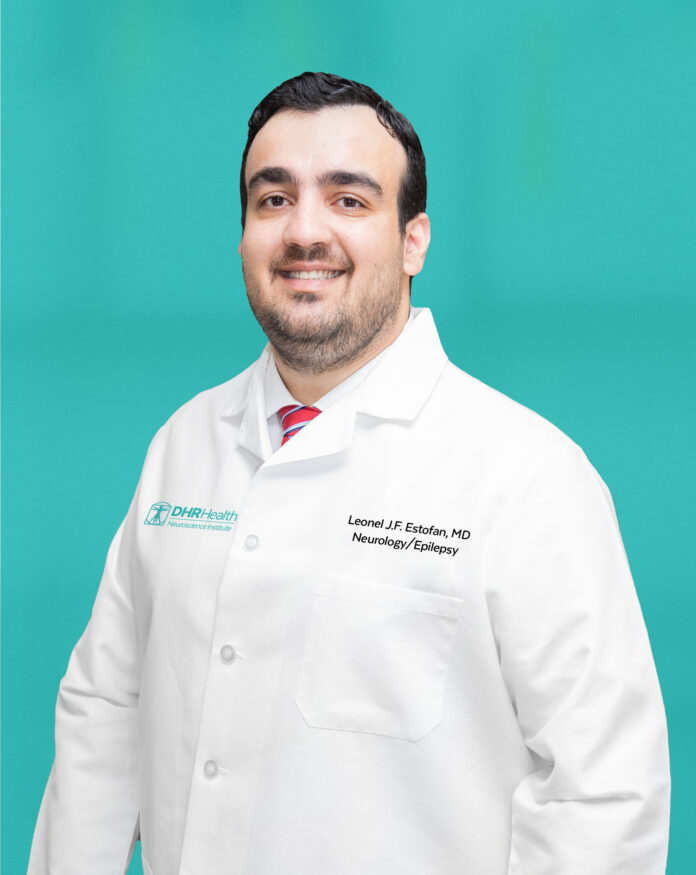
By: Dr. Leonel Estofan
DHR Health Neuroscience Institute
A patient who presents with a first seizure is in quite distress, whether as a child or adult. About 10% of the population will have a seizure at one point in their life, but less than half of these patients will have multiple seizures, which is why proper assessment is important and should be focused on.
The international league against epilepsy (ILAE) defines epilepsy as at least two unprovoked seizures or one unprovoked seizure and the probability of further seizures similar to the general recurrence risk (approximately 60% or more) over the subsequent ten years or the diagnosis of an epilepsy syndrome. When a diagnosis is accurately made, a patient has the best opportunity for a positive health outcome and clinical decision making will be tailored to the patient’s health needs.
Due to the importance of early evaluation, some epilepsy centers like DHR Health Neuroscience institute have established first seizure clinics. In these clinics, a patient who has experienced a first seizure is seen by an experienced epileptologist promptly, hoping that an early expert assessment will appropriately guide treatment. When assessed, the most critical next step is to decide if the patient needs treatment or not. At DHR Health Neuroscience Institute, we evaluate the chance of having a second seizure, the efficacy of medication in preventing future seizures, and the potential toxicity of antiepileptic drugs (AEDs).
The possibility of seizure recurrence is the most critical determination that will guide treatment decisions. Although sometimes we still have to deal with probabilities, fortunately, several population studies exist that can assist in this determination, such as an EEG and MRI, revealing the cause of a seizure and predicting the needs of medical management, with more than a 60% recurrence risk. For example, after two unprovoked seizures (more than 24 hours apart), the risk of subsequent seizures increases dramatically. A prospective study by Hausas and colleagues showed that after a second seizure, the risk of a third unprovoked seizure rose to 76%.
After a patient has had an epileptic seizure, the evaluation of the patient is important and should focus on assessing the risk for subsequent seizures, risk factors, acute causes, or previously unrecognized seizures.
If you would like more information about epilepsy or to schedule a consultation with our epilepsy specialist, please call the DHR Health Neuroscience Institute at (956)-362-8100.





